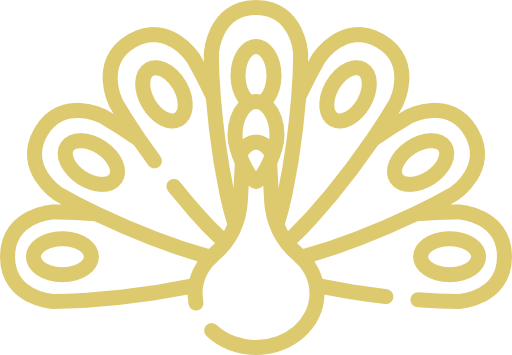- By Simi Sahota

Come along as I continue my journey through a brief history of India’s prints and patterns! One of the prettiest and eye-catching ways that shirts, dresses, and other garments are embellished is embroidery. There is no need to go any further than India to see how diverse and rich the tradition of embroidery truly is.
Embroidery is the art of decorating fabric using needle and thread to create patterns, motifs, and abstract designs. This technique also uses sequins, beads, and other decorative materials. The work is done by trained artisans and has been passed down generation to generation. From the 16th century, embroidery has flourished in many countries in Southern Asia. Within India, each different region and state has their own unique embroidery style. In this blog, we’re going to focus on the intricate handiwork produced in the northern states.
Kashmiri and Kashida embroidery are both native to the northern state of Kashmir and relies heavily on nature for inspiration. Kashmiri embroidery patterns are made with one or two embroidery stitches out of many different thread colors, although traditionally the colors used are white, off-white, or cream. The fabric is usually cotton or wool and is either cream or a pastel color. Kashida, while similar to Kashmiri embroidery in technique, predominantly uses crystal threads on canvas.
Both of these embroidery techniques rely on the Kashmiri stitch, a single stitch requiring plenty of skill to create. This stitch can be comprised of a chain stitch, the herringbone stitch, the satin stitch, just to name a few.

Chikan or Chikankari embroidery from the state of Utter Pradesh is the most popular and commercialized form of embroidery currently. It was rumored to been created by Nur Jehan, wife of Mughal emperor Jahangir. Chikan embroidery requires delicate and intricate handwork by local artisans. It is done on all types of fabrics ranging from muslin to cotton with different colored silk threads to keep up with fashion trends. Some pieces incorporate mirrors, beads, and sequins. Today, the city of Lucknow is the chikan embroidery capital of the world.
Chikan embroidery begins with the use of one or more pattern blocks to create a block-print pattern on the fabric. The artisan will then stitch the pattern with varying color threads or adornments. Stitches vary but popular types used include backstitches, chain stitches, and hemstitches with the result being an open work lace or shadow-work pattern. When the embroidery is complete, the fabric is washed, finished, and ready for use.

Phulkari, literally meaning “flower work”, is a common style of embroidery in the north western states of Punjab and Haryana. It is signified by a dull hand-spun basic covered in a tight network of embroidered threads such that there are no gaps. Phulkari uses a darn stitch on the wrong side of the cloth with silken colored thread. There is no set design so artisans can create innumerable, creative designs simply by manipulating the darn stitch. Additionally, the introduction of different types of stitches can make a one-of-a-kind design. Extremely popular on women’s bridal garments and other special occasion outfits, phulkari embroidery is a beautiful addition to any garment.
We’ve only touched on a few of the embroidery techniques common to India, there are many, many more! It is a rich culture that has transcended generations and is now becoming popular globally. So keep an eye out for Chikan, phulkari, Kashmiri, or one of the other types of embroidery on In-Sattva® garments or those you already have hanging in your closet. Here at In-Sattva, our team tries to piece together different cultures and history to curate a unique collection of embroidered pieces. Don’t forget to check back for the rest of my tour through India’s embroidery, prints and patterns history!

